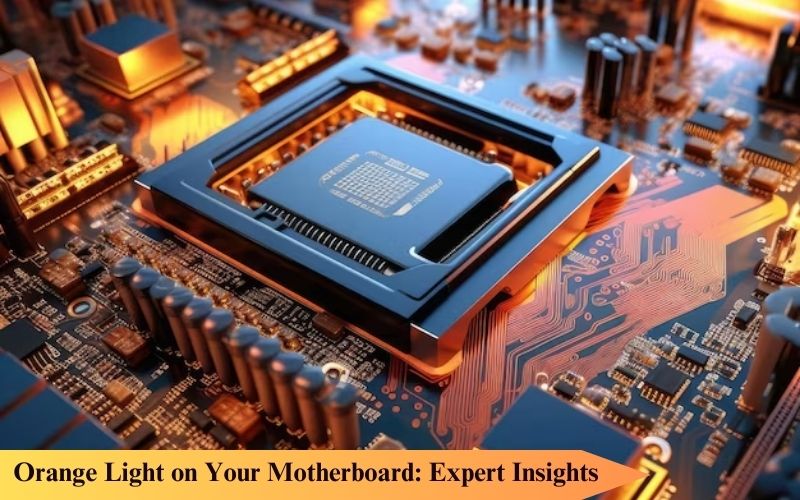The Mysterious Glow
Picture this: You’re sitting at your desk, eagerly powering up your computer for a productive day ahead. But wait, what’s that unexpected orange glow on your motherboard? If you’re scratching your head, you’re not alone. In this journey through the tech landscape, let’s unravel the mysteries behind the “Orange Light on Your Motherboard.”
The Expert’s Tale: A Personal Encounter
Every tech enthusiast has a story – mine begins with an orange glow beneath the sleek surface of my motherboard. Like an experienced traveler navigating uncharted territories, I delved into the intricacies to decode this unusual phenomenon.
Understanding the Orange Light: The Basics
The motherboard, often referred to as the heart of your computer, communicates through various signals, including the enigmatic orange light. It’s your computer’s subtle way of signaling an issue. Here’s what the hues might mean:
- Solid Orange Light: Typically points to a hardware problem. It’s like your motherboard whispering, “Something needs attention, dear user.”
- Flashing Orange Light: Indicates potential issues with your computer’s power supply. Picture it as a warning sign, urging you to check the power source.
Troubleshooting 101: Navigating the Technological Terrain
Like a seasoned explorer faced with a challenging landscape, let’s embark on the journey to troubleshoot the orange light on your motherboard.
- Power Supply Check: Ensure your power supply is stable. Unplug and re-plug the power cables, making sure they snugly fit into their respective sockets.
- Hardware Inspection: Investigate your hardware components. The orange light might be signaling a loose connection or a malfunctioning component. Securely reseat RAM, graphics card, and other peripherals.
- BIOS Exploration: Dive into the BIOS settings. Sometimes, a misconfiguration could be triggering the orange light. Adjust settings cautiously, consulting your motherboard manual if needed.
Expert Tips for a Smooth Sailing
As any experienced voyager would advise, it’s essential to stay prepared. Here are some expert tips to keep your motherboard voyage smooth:
- Regular Maintenance: Just like a well-maintained ship sails smoothly, ensure your computer components are dust-free and well-seated. Regularly clean and inspect for potential issues.
- Firmware Updates: Keep your motherboard’s firmware up to date. Manufacturers often release updates that address known issues and enhance system stability.
Conclusion: Navigating the Tech Waters
In the vast sea of technology, encountering the orange light on your motherboard is just a part of the journey. Armed with knowledge and a troubleshooting mindset, you can sail through these challenges and keep your tech vessel afloat.
To read more informative blogs follow AI Indies.
FAQs:
- Q: Is the orange light on my motherboard always a cause for concern?
- A: Not necessarily. While it often indicates an issue, understanding the specific context, such as a solid or flashing light, helps determine the severity.
- Q: Can a misconfigured BIOS trigger the orange light?
- A: Yes, misconfigurations in the BIOS settings can contribute to the orange light. Exploring and adjusting settings cautiously can often resolve the issue.
- Q: How often should I perform maintenance on my computer components?
- A: Regular maintenance, including cleaning and inspection, is recommended every few months to ensure optimal performance and identify potential issues early on.
- Q: Are firmware updates crucial for resolving motherboard issues?
- A: Yes, keeping your motherboard’s firmware updated is essential. Manufacturers release updates to address known issues, enhance compatibility, and improve overall system stability.
- Q: Can a loose connection be the sole reason for the orange light?
- A: Absolutely. The orange light often signals a hardware problem, and a loose connection or a malfunctioning component can be the culprit. Ensure all components are securely seated for smooth operation.




